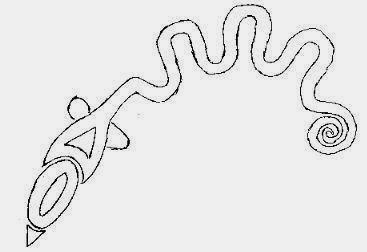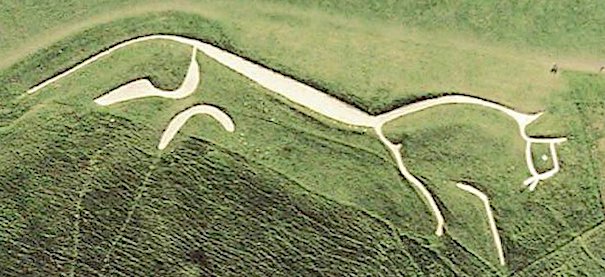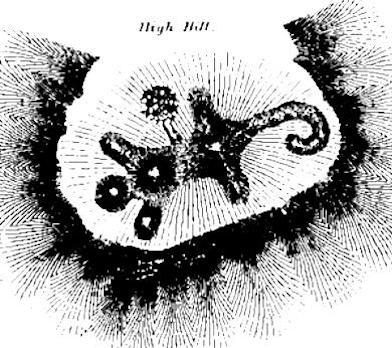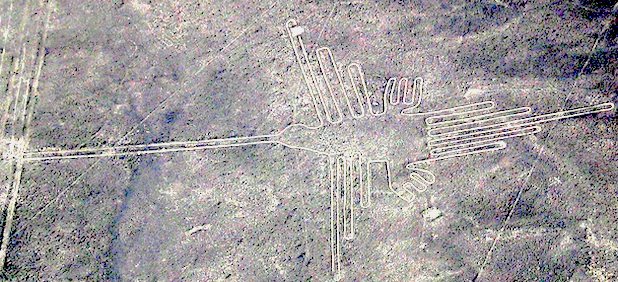Museum of the Origins of Man
HORIZONTAL ZOOMORPHIC COLOSSAL SCULPTURES IN THE POST-PALEOLITHIC
In North and South America there are artistic, colossal horizontal structures produced mostly with accumulations of stones or with grooves in the ground.
From a typological perspective, we define "sculptures" these structures, even if the term seems inappropriate, in the same way we consider "sculptures" the present-day plush toys.
The colossal sculptures of this type are all zoomorphic, in how much they represent terrestrial and marine mammals, birds, reptiles, spiders and amphibians.
In North America (US) these horizontal sculptures had funeral function (mounds), while in South America (Peru) they had function of "sacred paths" (paths of prayer).
In several regions of South America there are many zoomorphic engravings (graffiti) made not only on vertical, but also on horizontal rocks, which may have been floors for "sacred paths".
Enormous horizontal sculptures, made with accumulation of stones, are present also in Eurasia, as the "white horse" (Fig.24A2).
The age of the mentioned works ranges between 2000 and 500 years ago.
The work technique is less simple than it may appear, because, given the enormous dimensions, people who made the project ( scale- drawing) had to be a person with artistic and naturalistic skills, and with high " engineering " knowledge, because those who did the manual work were not able to "see" and " define" these enormous figures, which can only be seen from an airplane or a drone.
The artistic quality is further evident in the style of the snake head (Fig.24A1), in the elegant stylistic deformation of the image of the "white horse" in race (Fig.24A2) and of the hummingbird in geometric style (Fig.24A5).

Fig. 24A1) Post-Paleolithic horizontal "sculpture" of surface (mound).
It represents a snake, the "Great Serpent Mound". The head is completely invented according to the fashionable stylistic language at the time in which it has been made.
The sculpture is built with accumulated stones.
Dimensions: length 411 m, height from 1.2 to 1.5 m.
Location: Peebles, Adams County, Ohio, US.
Dating: 800 BC-100 AD approx.

Fig. 24A2) Post-paleolithic horizontal "sculpture" of surface (mound).
It depicts a quadruped, called the "white horse" because the deep grooves in the ground have highlighted the white of the chalk below creating the silhouette of a horse.
Dimensions: length 114 m (374 feet); average width from 1.5 to 3.0 m (5 to 10 feet).
Location: Uffington Castle Village, England.
Dating: 1000 BC.
The stylistic language is elegant, and is similar to that of normal sized artistic productions of Celtic art.

Fig. 24A3) Post-paleolithic horizontal "sculpture" of surface (mound).
(drawing by Squier and Davis, 1848).
It is commonly called "the panther", but opinions in the United States are different, some consider it an alligator, some a possum, some a lizard and some a salamander.
Built on top of a hill, with an accumulation of stones.
Location: Licking County, Ohio, US
Dating: 500 years ago!
 Fig. 24A5) ) Colossal horizontal post-paleolithic "sulpture" obtained by engravings in the ground up to 60 cm deep, removing the ferrous stones from the dark surface of the desert and thus creating a contrast with the lighter background below (name in use: Nazca Lines).
Fig. 24A5) ) Colossal horizontal post-paleolithic "sulpture" obtained by engravings in the ground up to 60 cm deep, removing the ferrous stones from the dark surface of the desert and thus creating a contrast with the lighter background below (name in use: Nazca Lines).
It represents a hummingbird, the smallest bird of the American continent, which, standing still in flight, feeds on the nectar of flowers.
The artistic style is geometric.
The interpretation of scholars on the use of this work is that of a "sacred path" for a procession of collective prayer. From the image one can imagine the enormous size in length and width, therefore superior to North American mounds.
Culture: Nazca civilization.
Dimensions: length 94 m distance between the extremes of its two wings 66 m.
Dating: between 300 and 500 years ago about.
Location: the site is in southern Peru.
NEXT
Index
HOME PAGE
Copyright©1999-2020 by Museum of the Origins of Man, all rights reserved.




